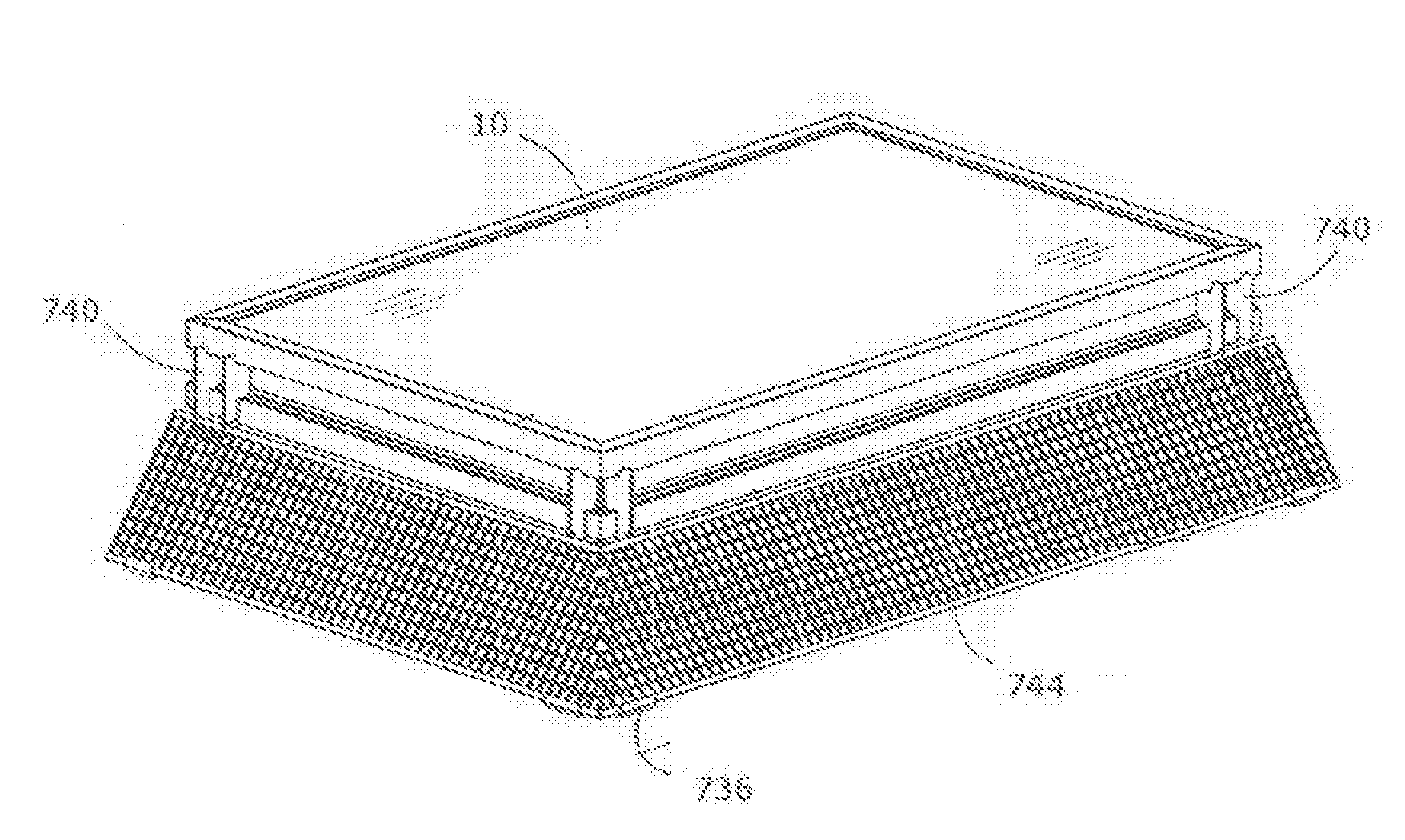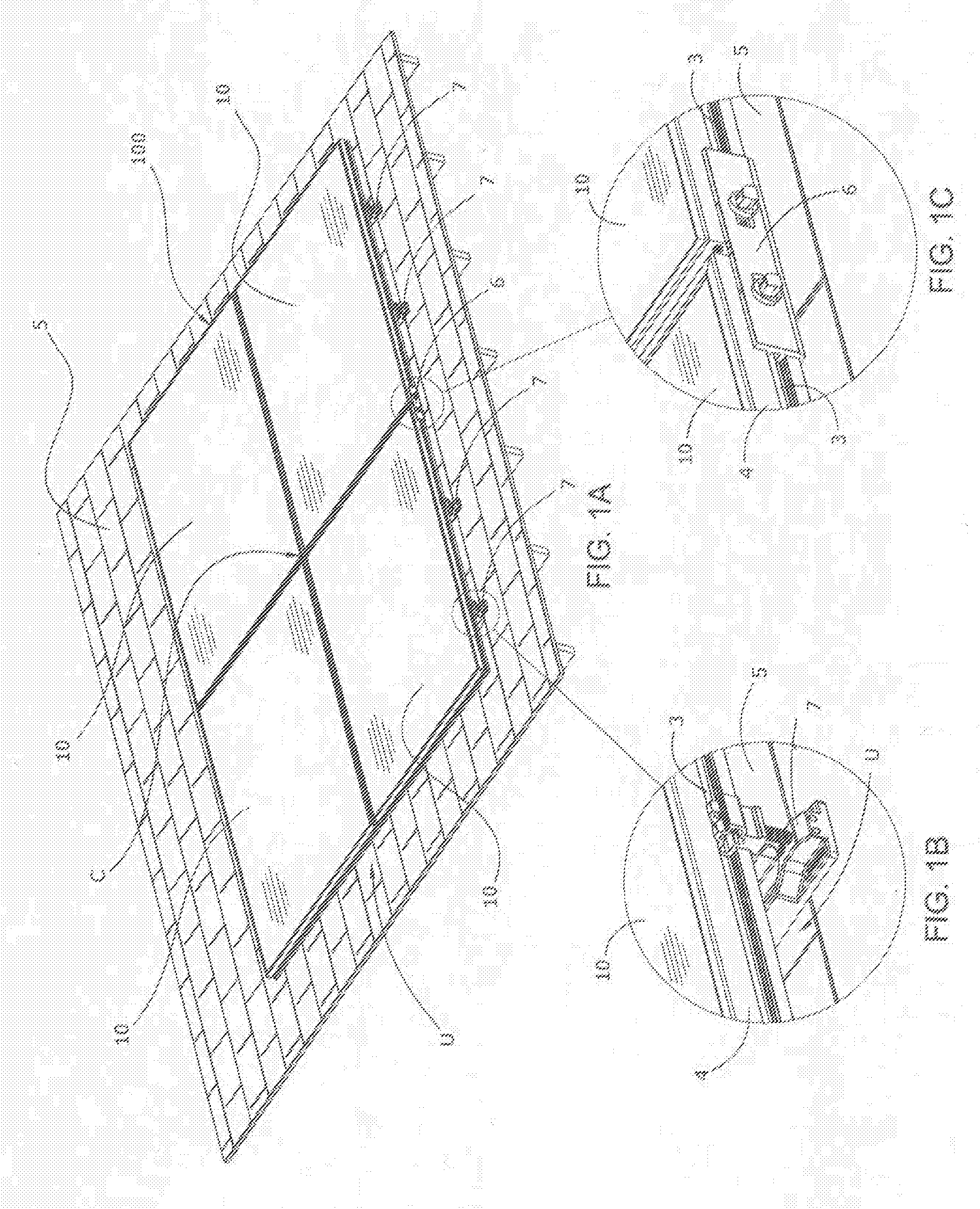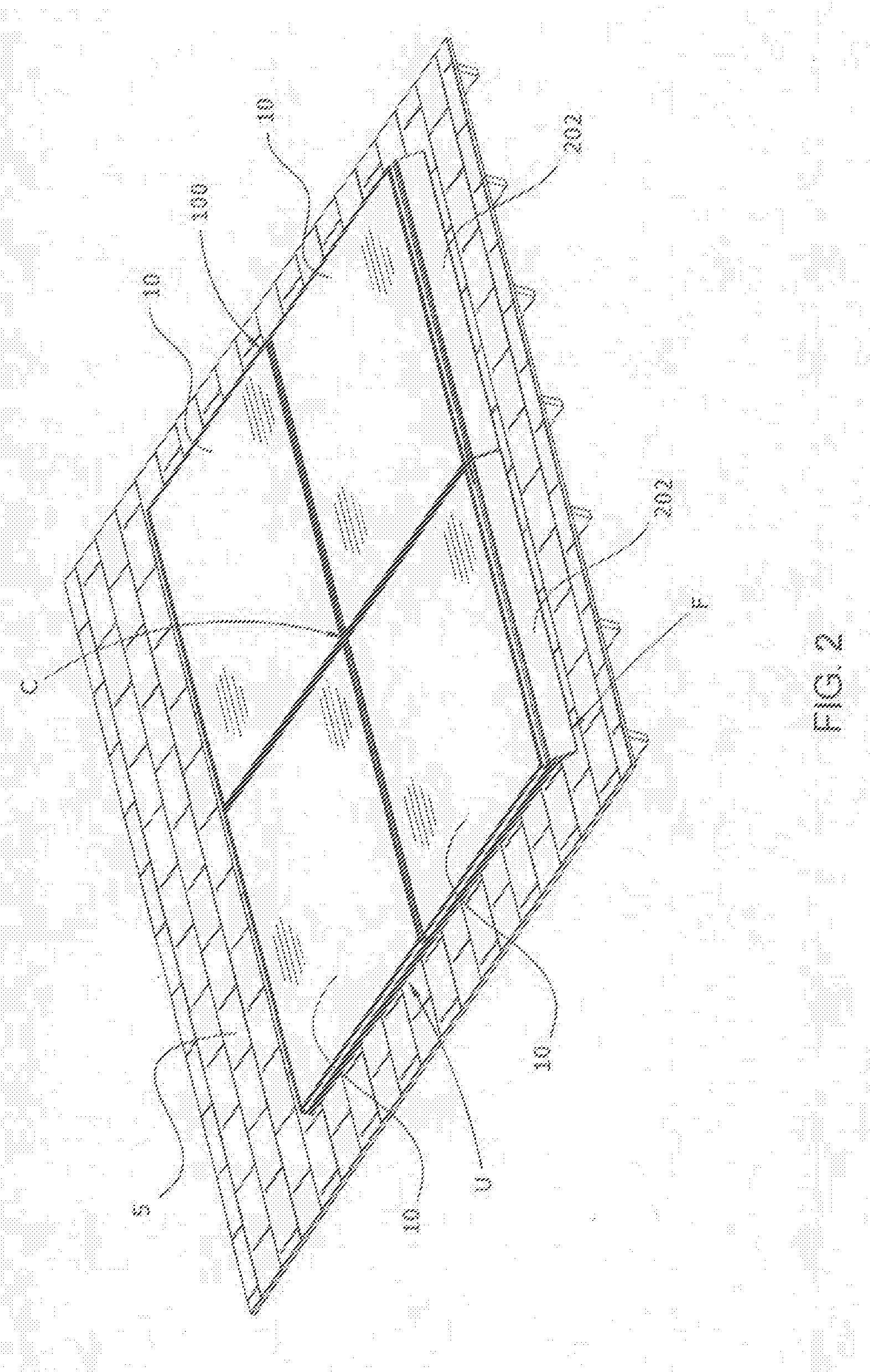Skirt for Photovoltaic Arrays
a photovoltaic array and solar panel technology, applied in the direction of solar heat collector mounting/support, solar heat collector safety, lighting and heating apparatus, etc., can solve the problems of flammable materials, fire safety hazards, organic debris,
- Summary
- Abstract
- Description
- Claims
- Application Information
AI Technical Summary
Benefits of technology
Problems solved by technology
Method used
Image
Examples
embodiment 260
[0074]FIGS. 60-63 show skirt embodiment 260 comprising louvers 79 located along the top of portion 260A of skirt 260. A separate flexible screen material 370 may be attached to the bottom of the skirt using common fasteners.
[0075]In embodiments skirt and screen elements disclosed above may be constructed of flexible materials that may conform to surface variations on the roof, thus providing an effective barrier.
embodiment 264
[0076]FIG. 64A shows a skirt embodiment 264 comprising a scalloped lower portion that conforms to a shape of a curved tile roof 305. FIG. 64B is a detail view of area in circle of FIG. 64A.
[0077]FIG. 65 disclose the manner in which the wedging fit of an anti-rotation component 11 may prevent interlock 6 from disengaging from within a module frame groove 3 due to rotation caused by downward module deflection created by heavy loading due to imposed forces from snow, ice or wind. This disengagement may once again be prevented by forcing a surface 13 of the anti-rotation component 11 in direct contact with a surface of a module frame 15.
[0078]FIG. 66 shows an accessory component assembly 600 that may be used to mount electrical boxes 500 of various types to groove 3. As FIG. 66 shows, anti-rotation components 11 may also be inserted into apertures 412 located within the accessory component assembly 600 in order to prevent rotational movement of the assembly after it has been installed.
[...
PUM
| Property | Measurement | Unit |
|---|---|---|
| angle | aaaaa | aaaaa |
| perimeter | aaaaa | aaaaa |
| flexible | aaaaa | aaaaa |
Abstract
Description
Claims
Application Information
 Login to View More
Login to View More - R&D
- Intellectual Property
- Life Sciences
- Materials
- Tech Scout
- Unparalleled Data Quality
- Higher Quality Content
- 60% Fewer Hallucinations
Browse by: Latest US Patents, China's latest patents, Technical Efficacy Thesaurus, Application Domain, Technology Topic, Popular Technical Reports.
© 2025 PatSnap. All rights reserved.Legal|Privacy policy|Modern Slavery Act Transparency Statement|Sitemap|About US| Contact US: help@patsnap.com



